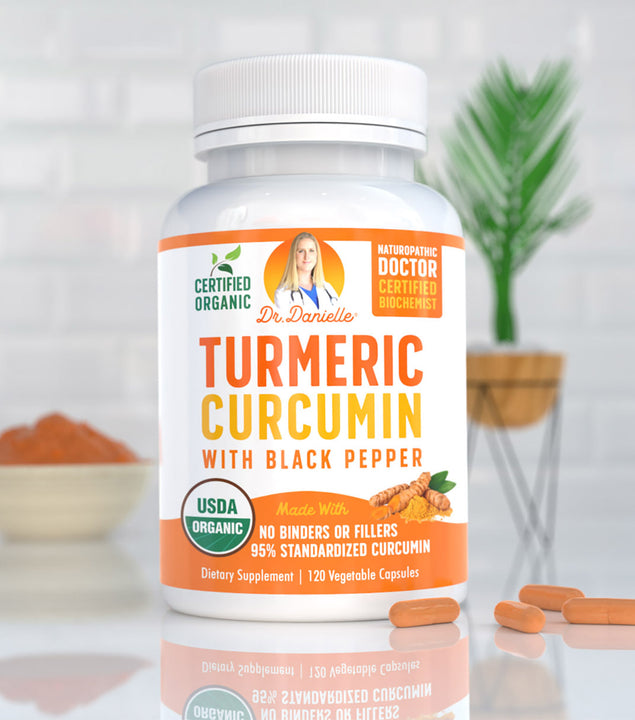The Celiac Disease Foundation reports that one out of every hundred people across the world suffer from celiac disease. In the United States alone, the disease continues to silently affect at least 2.5 million people, putting them at risk of long-term complications.
The existence of celiac disease was first described by a Greek physician some 8000 years ago. At that time, no one knew why it occurred or what triggered it, and its mechanism of development remained inconspicuous for centuries until scientists were finally able to find the responsible culprit: gluten, a protein commonly found in bread and many other everyday food items.
Today, we know much more about celiac disease, how it develops and manifests, and what can control it. If you or someone you love is suffering from it, it’s worth exploring it in detail and finding out how to address it with multiple home remedies and lifestyle adjustments.
Celiac Disease: Prevalence and Symptoms

The incidence of celiac disease is on the rise for the past few decades. Some sources suggest that its prevalence has risen by almost 400 percent compared to the 1960s. While its number of cases is still very low than other chronic health problems, like diabetes and cancer, what’s concerning is that many people continue to live with it without even identifying it. Studies suggest that only 15 to 17 percent of people with celiac disease receive a formal diagnosis, meaning that roughly 85 percent are unaware of what’s making their life so difficult.
Most symptoms of celiac disease boil down to digestive tract dysfunction, primarily within the intestines. As an autoimmune disease, it occurs due to a rise in the inflammatory response secondary to the presence of gluten in the body. As these rising levels of inflammation affect the small intestine, this tube-like structure is unable to absorb nutrients from the gut into the blood.
Celiac disease can be complicated to diagnose since it affects people on different levels and in multiple ways. The disease can manifest in the form of hundreds of different symptoms, some of which include:
· Chronic lethargy or fatigue
· Bloating
· Changes in body weight
· Abdominal pain and cramping
· Brain fog
· Pain in joints and bones
· Nutrient deficiencies
· Sleep disturbances
· Constipation or diarrhea
· Mood changes
· Chronic headaches
· Dull skin
· Thinning of hair
· Mouth sores
· Irregular menstruation, miscarriages, or infertility in females
· Numbness in feet and hands
· Seizures
How is Celiac Disease Diagnosed?
Diagnosis of the celiac disease typically begins with a detailed medical history and physical exam. A doctor may perform some additional tests to confirm the diagnosis. People with celiac disease commonly have high anti-tissue transglutaminase (tTGA) and antiendomysium (EMA) antibodies that can be detected through blood tests.
Other standard blood tests performed in suspected patients of celiac disease include:
· Cholesterol test
· Complete blood count
· Serum albumin test
· Alkaline phosphatase level test
· Liver function tests
Some people may undergo a skin biopsy for confirmation of a diagnosis. A certified doctor will remove small pieces of skin tissue during this procedure and observe it under a microscope.
A doctor may resort to endoscopy if blood tests and skin biopsy fail to provide a solid diagnosis. During the upper endoscopic procedure, an expert will pass a thin tube with a camera attached to its one end to the small intestine through the mouth. The camera allows doctors to visualize the insides of the intestines and check for any structural damage related to celiac disease.
Treatment of Celiac Disease
Despite modern medical advancements, experts have yet to find a permanent cure for celiac disease. The only way to keep it under control is by permanently removing gluten from the diet. Without this food agent, the damaged intestinal villi begin to heal and absorb nutrients properly in time. A doctor can help you understand how to avoid gluten while following a healthy diet plan. They may also provide instructions on reading food labels properly so that you can identify and avoid using any products with gluten.
Following a gluten-free diet is easier said than done. Fortunately, many companies now provide multiple gluten-free products commonly available at all big grocery stores with a “gluten-free” label.
If you suffer from celiac disease and wish to keep it under control, it is essential to know which foods are safe and which should be avoided. Below is a basic guideline to give you an overview of how to shape your daily meals.
Foods to avoid
· Bulgur
· Farina
· Graham flour
· Triticale
· Rye
· Wheat
· Semolina
· Spelt
· Durum
Foods to avoid unless gluten-free
· Candy
· Cookies
· Cereals
· Pies and cakes
· Beer
· Gravies
· Bread
· Croutons
· Crackers
· Oats
· Soups
· Pasta
· Salad dressings
· Processed meats, hot dogs, and sausages
· Sauces
Foods to eat
· Fruit
· Starchy vegetables, such as potatoes, peas, corn, and sweet potatoes
· Fresh meat, poultry, and fish that have not been marinated, coated, or breaded
· Most types of dairy products
· Lentils, beans, and rice
· Wine, ciders, spirits, and distilled liquors
· Vegetables
Most people start noticing improvements in their symptoms within days of removing gluten from their diet. Note that if you stop eating gluten prior to certain tests and confirmation of a diagnosis, the results may come back negative or inconclusive.
Managing Celiac Disease with Home Remedies
In addition to limiting your gluten intake, consider following the tips mentioned below for managing the symptoms of celiac disease:
Fish Oil
Fish oil can coat the walls of your small intestines and protect it from becoming inflamed. As a result, consuming fish oil can reduce your risk of developing a painful bout of celiac symptoms if you accidentally ingest gluten.
Yogurt
Yogurt is a rich source of probiotic bacteria that heal the digestive tract. Hence, doctors routinely advise people with celiac disease to increase their daily yogurt intake to maintain a healthy gut. You may also consider consuming pre and probiotic foods as well as a probiotic dietary supplement.
Vitamin and Mineral Supplements
If you are a patient with celiac disease, your body is likely to be deficient in certain essential nutrients since the small intestines may not be in optimal shape to absorb essential nutrients from the diet. Due to this reason, it may be a good idea to supplement the body with some mineral and vitamin supplements.
Consider talking to a doctor regarding getting a detailed blood workup to identify the exact types of deficiencies you may be experiencing. Based on these test results, a doctor may prescribe you supplements containing iron, calcium, zinc, and vitamins B12, D, and K. Before starting any dietary supplement, check with the manufacturer to confirm they do not contain any gluten. You may be surprised to find out how many do contain gluten, even if not clearly stated on the label. Patients with celiac disease may also consider talking with their doctors about receiving injectable supplementation.
Herbal Extracts
Patients with celiac disease commonly use olive leaf and goldenseal extracts as they can help regulate the immune system and reduce its autoimmune effects on the intestines. You can also consider brewing yourself a cup of horsetail tea or chamomile tea to reduce the inflammatory levels in the digestive tract while improving its durability and strength.
Peppermint Oil
The antispasmodic effects of peppermint oil can reduce intestinal cramping associated with celiac disease. Using sustained-release capsules of peppermint oil has also been known to alleviate symptoms of digestive disorders, such as IBS and similar effects are expected for those with celiac disease. Consider choosing enteric-coated capsules to minimize their harmful side effects, such as heartburn.
Slippery Elm Powder
Derived from the bark of slippery elm, this power converts into a mucus-like gel that coats the intestines and protects them from inflammatory side effects. Research has proven its benefits in treating the symptoms of constipation-dominant irritable bowel syndrome, and similar effects might be helpful in managing constipation related to celiac disease.
Avoiding Accidental Gluten Exposure: Tips to Follow

One of the most critical aspects of managing celiac disease involves complete abstinence from gluten from the diet. While this can be highly challenging, the following tips can be used to prevent accidental exposures.
· Keep gluten-containing foods separate in sealed containers or separate cabinets with proper labels
· Do not use cutting boards or wooden utensils that can absorb food and cause cross-contamination
· Wash all dishes, food preparation equipment, and utensils properly
· Regularly clean all food storage areas and cooking surfaces
· Check the menu of the restaurant you plan to dine at beforehand to ensure that they have a gluten-free menu
· If your child has celiac disease, talk to their teacher or school management about their diagnosis to avoid accidents during lunchtime
· Call the restaurant in advance and let them know about your health issue so that they can accommodate you properly
Conclusion
As a lifelong illness, celiac disease poses multiple challenges and constantly threatens sudden health deterioration. Fortunately, managing it has become much easier in recent years due to increased awareness and the widespread availability of gluten-free food items. Moreover, home remedies and lifestyle habits can always make the condition more manageable on a day-to-day basis.
Remember that having celiac disease is not the end of the world. You just need to be careful about what you put in your stomach, and it becomes possible to live comfortably and happily.








